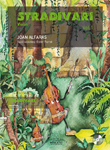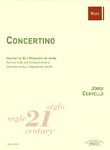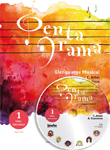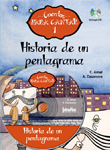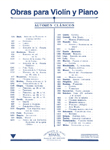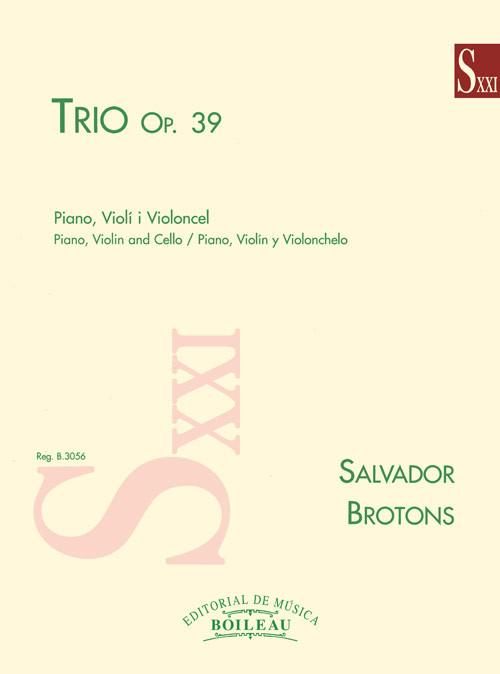WORKS
- Genre
-
Musical education
- Choir
- Counterpoint
- Dictation
- Direction
- Exam study manuals
- General music pedagogy
- Harmony
- Hearing
- Illustrations / Posters
- Improvisation / Sight reading
- Instrument methods
- Instrument pedagogy
- Instrumental study repertoire
- Instrumentation and orquestration
- Musical language
- Solfège
- Templates
- Theory and analysis
-
Incidental music
-
Lined paper
-
Flamenco
-
Religious music
-
Classical / contemporary
-
Modern music
-
Folk music / traditional
-
Musicology
-
Divulgation
-
Games and hobbies
-
Music therapy
-
Children / Youth
-
- Instruments
- Ensemble
- Difficulty level
- Period
- Genre
SOPORTE
Search
Find here: books, scores, composers, digital pieces, cd's
Best-selling works
Our classics

Newsletter
I wish to be informed of the news about your music
We have received your e-mail correctly
Multimedia
Trio, op. 39
Violín, Violonchelo y Piano
BROTONS, SalvadorBROTONS, SalvadorBROTONS, SalvadorReg.: B.3056
20,40 €
P.V.P. (VAT included 4%)
Add to cart
- Ensemble: Trios: With piano.
- Genres: Classical / contemporary: Chamber.
- Product format: Partitura + particellas
- Difficulty level: Intermediate-advanced
- Period: 2nd half S. XX - XXI
- Publishing house: Editorial Boileau
- Collection: Siglo XX
- No. of pages: 32+16
- Measure: 31,00 x 23,00 cm
- Lenght: 16'15"
- ISBN: 978-84-8020-174-2
- ISMN: 979-0-3503-0504-7
- Available in digital: No
- Available for rent: No
The Trio Op. 39 was written in Tallahassee (Florida, EUA) when I was doing my doctorate studies in Composition at the Florida State University with Doctor Roy Johnson. Composed for the Trio Barcelona the piece is conceived in one whole movement without interruption although it contains several tempi changes. It is structured in mirror form with the addition of a brief and very fast coda. A search of contrast is achieved in this piece perhaps more than ever. After a tender, smooth and slow introduction, the aggressive entrance of the cello in the Allegro feroce is abrupt while sharing the same thematic material. The second theme, introduced by the violin, is gentle and expressive. It follows a development section based on the first 6 notes of the main theme, which will reach a tensional point fostered by repeated notes by the violin and cello. The piano alone stops the climax and distends the music to bridge to a meditative middle part, slow and truly the heart of the piece. Based on a piano bass ostinato, a placid new melody is introduced by the cello and later by the violin in a reflective mood. The «Allegro» recapitulation is completely modified both texturally and instrumentally besides being shorter. A remembrance of the tender introduction (now by the cello in the high register) may hint a soft ending of the piece but once more the sudden contrast appears: a brief but intense «ff» coda based on previous material closes the piece with great energy.
Salvador Brotons

